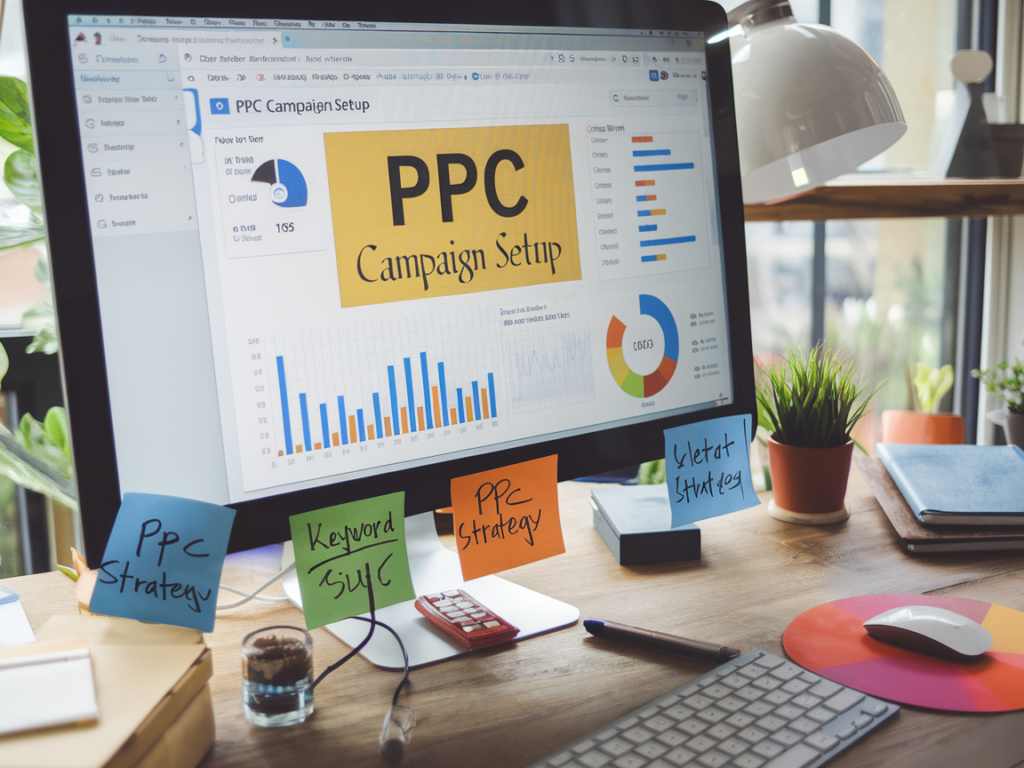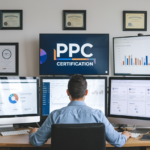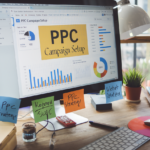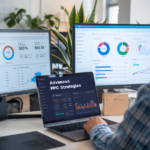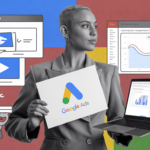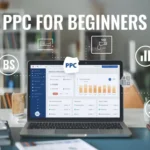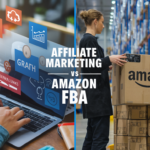PPC Campaign Setup: A Step-by-Step Guide to Drive Results
Introduction
Are you prepared for the next level of digital marketing campaign? “PPC Campaign Setup” is the starting point in creating effective online ad campaigns that are integrated for instant outcome delivery. PPC advertising is effective in that it enables firms to reach their target market successfully; business traffic and leads can be attained within several hours of launching an advertising campaign. In this guide you will learn everything about PPC starting from the very beginning all the way to how to get the most out of your campaign in terms of ROI.
What is PPC Campaign Setup?
PPC Campaign Setup means establishment, development, and implementation of PPC advertising campaigns in specific web or social media tools as Google AdWords, Microsoft AdCenter, or social media platforms. It helps business to bid for certain keywords and advertise to people that are actively seeking certain products or services. Being the acronym for pay per click, it eliminates the worry of fixed fee payment like the general advertising, and instead you only pay once your advertisement has been clicked at.
The Role of PPC in the Context of Digital Marketing
- Instant Traffic: In contrast to organic approaches, PPC drives the instant returns regarding visibility and traffic.
- Targeted Reach: Advertisers can select the specific demographic, geographical location, and activity of users.
- Scalability: With PPC, costs are feasible and flexible to meet any company’s budget no matter how big or small it maybe.
- Measurable Results: A detailed analysis of the tool means that it shows the performance and ROI in real-time.
Important Factors That Define Successful PPC Campaign Setup:
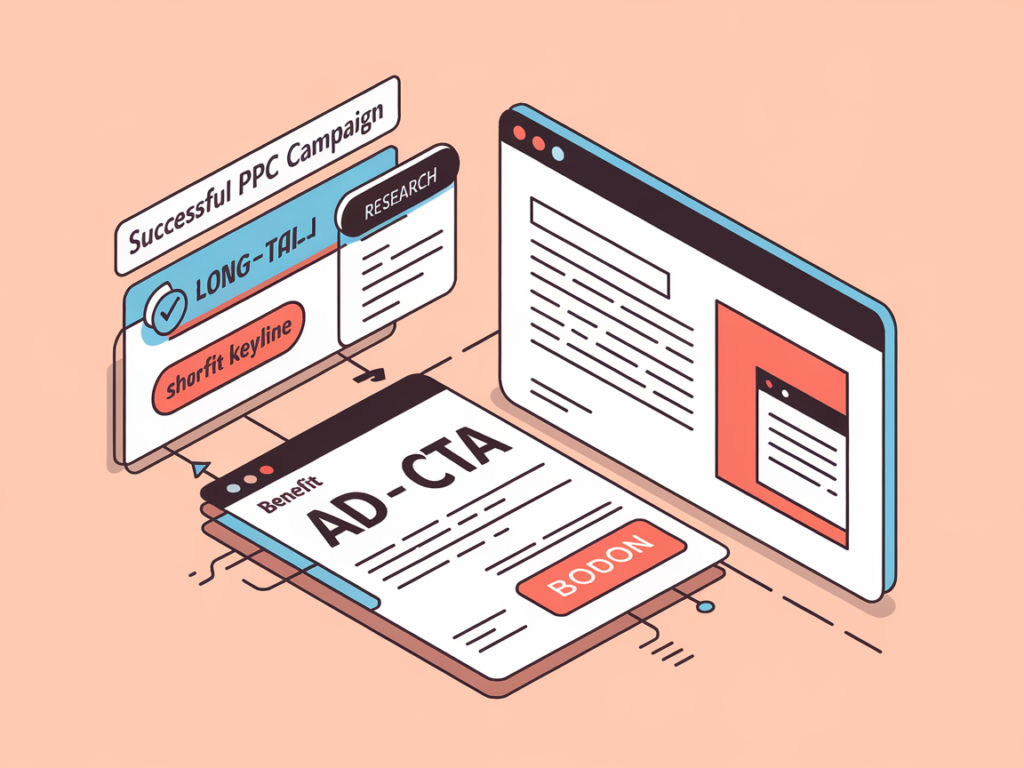
- Keywords and Their Role
The words are the backbone of any PPC marketing as they connect clients with their promotional campaigns and the actual searches they make. Selecting these keywords is very important since they define the time and place of advertisement. Strategic planning of keywords makes the chance high for your ads to be clicked by the right audience as they are produced. Decision makers should thus consider the aspect of long-tail keywords and short-tail keywords, frequency and competition of the keywords, and user intent to have a better chance of having a good reach on the campaign the people.
- Ad Copy
Ad text is the first touchpoint that customers share with the advertisement, and therefore the effectiveness of the advertisement message depends on the ad text created. When writing the ad copy it has to be relevant, persuasive and straight on fit for the users’ search queries. It must contain some basic elements: The headline, the benefits to the client of your product or service, and a powerful, active CTA. The copy should also blend with the tone and the message of your website to conform to the landing page of the ad click to conversion.
- Landing Pages
When a user clicks on your ad, they are taken to the landing page and this is the additional last link that defines the actual conversion of that click into say a sale or lead generation. A perfect example of a good landing page should be easy to navigate and globally appealing as well as have relevant information reflecting the content of the advertisements placed. The page should take less time to load, it’s layout should be clean and simple and have strong CTA that will encourage the user towards completing the goal. In addition, its location on the site should be highly accessible, mainly, it is necessary to have a mobile-responsive landing page for all users.
Steps for PPC Campaign Setup
To use PPC, it is necessary to understand the whole process of the campaign, and choose the right strategies. Below is a detailed breakdown of the process, ensuring every critical aspect is addressed:
1. Select the Right Advertising Platform
It is very important to make the right selection of the platform. Google Ads are great for search intent and display is better for visually appealing and targeted demographic campaigns. In this respect, consider where your target group spends time and time again and how that dovetails with your advertising objectives.
2. Set Specific Target Outcomes
Set specific objectives on the campaign. Examples include:
- Driving more website traffic.
- Generating qualified leads.
- sales promotion or driving downloads of an application. Clear objectives will help you inform various decisions throughout the campaign setup process.
3. Do Keyword Research in Detail.
Your ads will reach the right people by good keyword research. However, you can use such tools as Google Keyword planner, Ahrefs or SEMrush.
- Start with the list of keywords with high traffic.
- Consider the keyword long-tail keywords that though are not often searched but have highly intentioned keywords.
- It’s time to make a list of negative keywords to exclude by-sphere sites and thus protect the ad budget.
4. You set a Realistic Budget and a Bidding Strategy.
Set your daily budget and monthly budget keeping your goals on mind. Decide on a bidding strategy, such as:
- Manual CPC:Full control over an individual keyword’s bid.
- Automated Bidding: The platform adjusts bids optimally for performance depending on your budget and targets.
5. Craft High-Quality Ad Copy
The copy in your ads needs to be so good that people feel encouraged to click through. Follow these best practices:
- With action oriented language, direct to the users’ needs, you can use.
- But what you should do is highlight unique selling propositions (USPs) like discounts, free trial periods or better features to tempt them and make them sign up.
- It should include it a powerful Call to Actions like ‘Shop Now’ or ‘Sign Up Today.’
6. Create Optimized Landing Pages
To convert clicks to conversions, you must have a high converting landing page. Focus on.
- Making sure the landing page does what the ad promised – and does it well.
- Creating a good looking CTA.
- Fast load times and mobile friendly so people don’t bounce.
7. Configure Ad Extensions
With ad extensions, you can increase the value between your ads and your ads. Examples include.
- Sitelinks, which take users to specific pages.
- Call extensions to encourage direct phone calls.
- Location extensions: Attract local customer through location extensions.
8. Start the Campaign and Monitor it.
After the campaign goes live, you must keep an eye on the performance of your campaign regularly. Use analytics tools like Google Ads Manager and Google Analytics to track:
- Click-Through Rates (CTR).
- Conversion Rates.
- Country Specific group bidding (CSC) & Return of investment (ROI) and Cost Per Click (CPC).
9. Optimize Continiously Your Campaign.
- A/B Test Ad Components:Change up the wording, images, and the call to actions to see what audience responds to the most.
- Refine Targeting: Geographic, demographic and behavioral settings will be adjusted to better match your audience.
- Enhance Quality Score: At reduced costs, we can improve ad relevance, expected CTR, and landing page experience for higher rankings.
10. Retargeting Strategies to use
This involves retargeting ads which means you reach out to users who didn’t convert in the first time. Customers will remember your product or offer using this, and the more people that see the ad, the more likely they will be to convert.
Optimizing Your PPC Campaign Setup
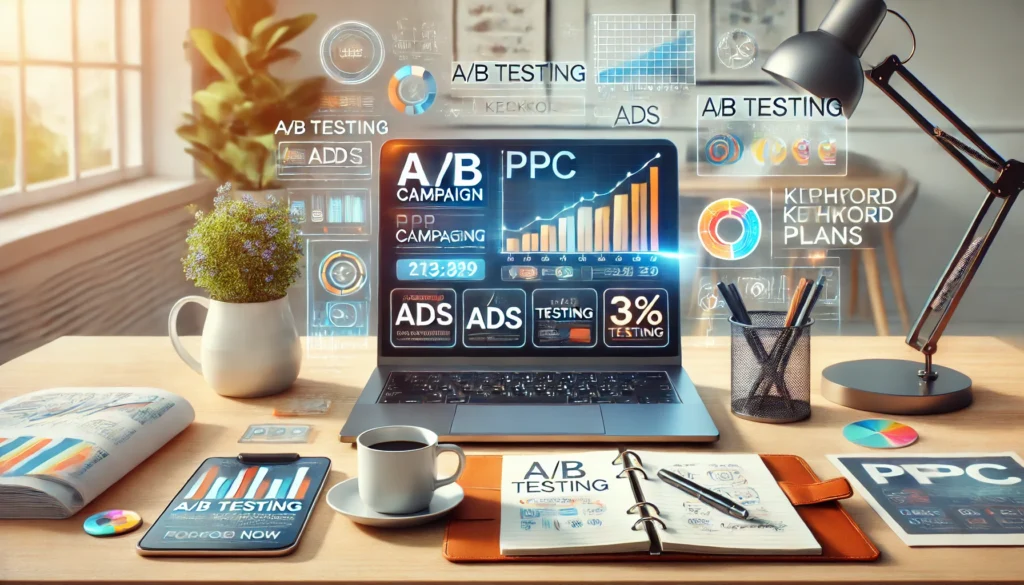
1. Improve Quality Score
It’s critical for your ad ranking be higher, at lower cost, and to improve Quality Score to do so. Quality Score is influenced by:
- Ad Relevance: So your ads are relevant to the search queries.
- Expected Click-Through Rate (CTR): Define what makes compelling ad copy and use eye catching visuals to attract clicks.
- Landing Page Experience: Make your landing page relevant, user friendly and has fast load times. Make sure that what it promises is what it delivers.
2. Conduct A/B Testing
A/B testing allows you to dial in the campaign elements to see what works and what doesn’t — this reduces the need to guess. Focus on testing:
- Ad Copies: Try out different headline and description variations, different call to actions.
- Visuals: Varying images or videos will help to know which will engage with your audience.
- Landing Pages: So you can test different layouts, offers, or CTAs to keep increasing conversion rates.
3. Refine Targeting
Optimise its targeting to improve the outcomes of relevant campaigns. Strategies include:
- Geographic Targeting: Concentrate on the areas where your audience spends most of his/her time.
- Demographic Targeting: Toggle with preferences such as age, gender, income, or interests according to the target customer.
- Behavioral Targeting: They should improve the ways that the audience segments are tailored by analyzing user behaviors including purchasing and browsing history.
4. Optimize Bidding Strategies
Bidding strategy will depend on the performance and aims.
- Manual Bidding: Offers complete control for experienced advertisers.
- Automated Bidding: Adapts to your goals of focused ad placements and employs machine learning to decide the best bid methods for your goals like conversion rates or impressions.
5. Analyze and Adjust Regularly
The latter applies the effective monitoring and adjustment approach is critical for success. Use analytics tools like Google Ads Manager and Google Analytics to track:
- CTR (Click-Through Rate): Indicates how compelling your ad is to users.
- Conversion Rate: Measures how effectively your landing page converts visitors.
- CPC (Cost-Per-Click): It helps to manage budget efficiency.
- Impression Share: Reveals how often your ad appears compared to competitors.
6. Retargeting Strategies should be implemented
Retargeting helps convert users who didn’t act initially. Create personalized ads reminding them of products or services they viewed, using:
- Dynamic Retargeting: Keep track of exactly which products users were interested in by showing ads that are tailored specifically to those products.
- Cross-Channel Retargeting: Increase touch points drive reach among a wide audience to a wide range of platforms.
With these optimization strategies, you can direct your attention to achieve that, and keep your PPC campaigns efficient, engaging and highly effective.
Common PPC Mistakes to Avoid
- Overbidding: Budgets are depleted without a proportional return.
- Ignoring Negative Keywords: Results in irrelevant clicks.
- Poorly Designed Landing Pages: Reduces conversions.
- Neglecting Analytics: It hinders optimising the campaign.
FAQs About PPC Campaign Setup
-
What is PPC Campaign Setup?
Pay per click (PPC) is the process of planning, developing and controlling pay per click advertising campaigns to generate paid traffic and conversions.
-
What PP platform do I choose?
You need to analyze your goals and your audience. While Google Ads work best with search intent, Facebook Ads are exceptional social targeting.
-
What are negative keywords?
They include these keywords which your ads will not show up in irrelevant searches.
-
What does a PPC campaign Setup cost?
Depending on industry, competition and budget, costs vary. Make it with low budget and grow your budget with experience.
-
What is the reason behind Quality Score?
Lowering costs and increasing ad rankings through a lower Quality Score increases ROI.
-
Can PPC campaigns really work for small businesses?
Absolutely! Small businesses can compete if targeted and optimized right.
Conclusion
PPC Campaign Setup is definitely one of the key elements to getting any business to thrive within the digital marketing battlefield. If you follow the steps carefully and refine your campaigns perpetually, you can get highly targeted traffic, engage people further in your campaigns and improve your conversion rates. Ready to go on that journey? Don’t wait, start with your PPC strategy today and see how it will positively transform growth for your business.

